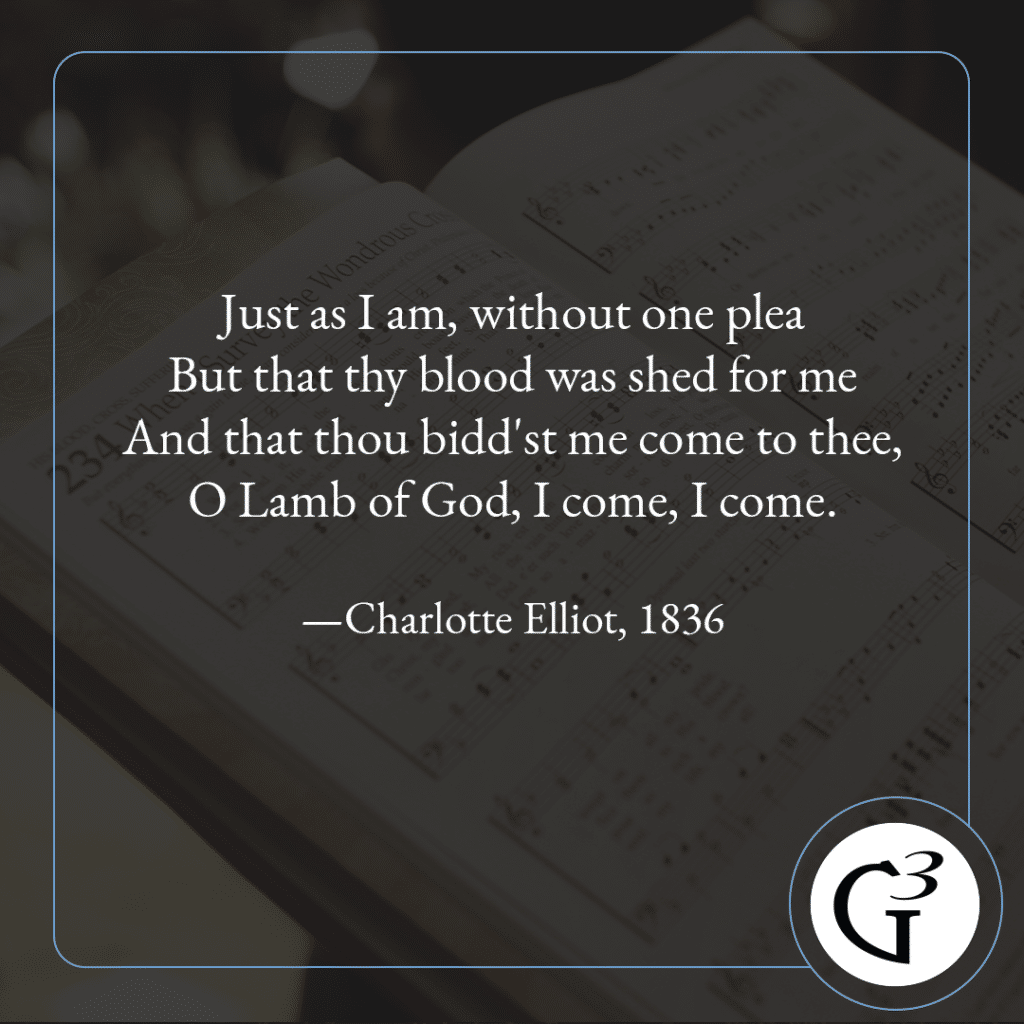
Have you ever been overwhelmed with fears and doubts about whether or not you truly are accepted by God?
Charlotte Elliot was born in Clapham, England on March 18, 1789. Near her 30th birthday, she was struck with a serious illness and her health rapidly declined. She remained physically disabled for the rest of her life. During the year following her sickness, Charlotte became keenly aware of the evil in her own heart, and wondered whether it could be possible that a person as sinful and weak as she knew herself to be could ever be saved.
Charlotte groped in spiritual darkness for a year, despairing and dejected. She finally found relief on May 9, 1822, when an evangelist, seeing that she was held back from Christ by her own self-saving efforts, spoke to her about the state of her soul. He said, “Dear Charlotte, cut the cable. Cut it. It is a small loss anyway. You must come to Christ just as you are.” She did and Christ did not cast her out.
Though her soul was healed in Christ, her body remained broken and was a means by which God would continue to sanctify her. Her inability to serve God as she thought she should eventually led to a spiritual crisis that culminated in 1834. A family friend recorded what happened. He described what happened in this way:
Ill-health still afflicted her. And her condition often caused her the peculiar pain of a seeming uselessness in her life while the circle round her was full of unresting serviceableness for God.
One night she was kept awake by distressing thoughts of her apparent uselessness; and these thoughts turned into a spiritual conflict, till she questioned the reality of her whole spiritual life, and wondered whether it were anything more than an illusion of the emotions, an illusion ready to be sorrowfully dispelled.
The next day the troubles of the night came back upon her with such force that she felt they must be met and conquered in the grace of God. She gathered up in her soul the grand certainties, not of her emotions, but of her salvation: her Lord, His power, His promise. And taking pen and paper from the table she deliberately set down in writing, for her own comfort, the formulas of her faith. So in verse she restated to herself the Gospel of pardon, peace, and heaven. It was then that she understood that she was accepted in the Beloved even now and always, not only at some past moment. She recorded these truths in verse, writing the hymn: Just as I am, without one plea.
The theme of “Just as I Am” is the poor sinner coming to Christ for mercy. Each stanza follows the same general, three-part pattern:
a humbling, (just as I am, without one plea)
a hope, (but that thy blood was shed for me)
and a hurry. (O Lamb of God, I come! I come!)
The gospel of Christ’s mercy is proclaimed through this hymn. The mercy of Christ is salvation to those who are dead in their sins. And, the mercy of Christ is the living water and the bread that comes down from heaven for those of us who are in Christ. When Christians regularly partake of the mercy of Christ by faith and with repentance, they are nourished and strengthened.
Consider Christ’s merciful response to Elliot’s despairing the next time you sing this hymn. And if you find yourself in spiritual conflict concerning your usefulness and standing before God, take up this hymn and sing. Gather up in your soul the grand certainties, not of your emotions, but of your salvation: your Lord, His power, His promise. Recall that Jesus promised, “All that the Father gives me will come to me, and whoever comes to me I will never cast out.” (John 6:37)
Learn more about how our hymns came to be and how they have encouraged, strengthened, and comforted believers by subscribing to Ryan Bush’s podcast, Hymn Stories. Available on Apple, Spotify, and other podcast platforms.




